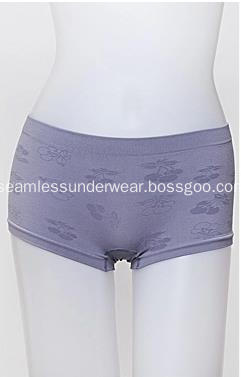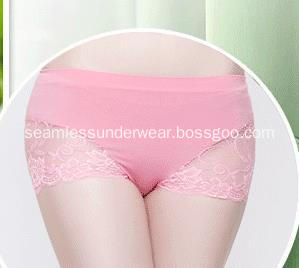Foreign trade companies encounter extreme cold
[China Glass Network] For small and medium-sized foreign trade enterprises, the rise of raw material prices and labor costs, the appreciation of the renminbi and the intensification of foreign trade protectionism may all become long-term trends, and it is necessary for enterprises to “self-seek the way outâ€.
The cold wave is very embarrassing. With such feelings, it is appropriate to understand the current mood of Chinese foreign trade enterprises. The rise in raw material prices and labor costs, the appreciation of the renminbi, the lack of external demand, and the increase in foreign trade protectionism... A large number of SMEs that rely on export trade for a living are undergoing The "second winter" since the financial crisis.
Professor Yin Xingmin, deputy director of the China Center for Economic Research at Fudan University, told Xinmin Weekly that the current environment facing China's foreign trade companies may be worse than the 2008 financial crisis. These companies can seek new markets or change product mix. To tide over the difficulties, and e-commerce may help Chinese foreign trade companies survive this cold season.
There is frost on the snow
Han Xiaodong, the founder of Shanghai Xinyi Auto Parts Co., Ltd., who has been immersed in the foreign trade industry for many years, told Xinmin Weekly that the competitiveness of small and medium-sized Chinese foreign trade enterprises in the advanced market is generally declining. His words have been recognized by many "Made in China".
Mr. Jin is the head of the marketing department of a wood products manufacturing company in Jilin. The company's main product is the floor. It has been engaged in overseas sales for more than ten years. The customers are mainly in Europe and America, and the customers in Asia are Korea and Japan. Checkouts with these countries are through the US dollar, and the company's procurement of raw materials such as timber is passed through the renminbi. In other words, the appreciation of the renminbi is equivalent to the price reduction of the product in disguise. Since 2010, the exchange rate of the RMB against the US dollar has been rising, and the floor of the export has been sold at the original price. The company's profits will be continuously compressed, and now it has reached the edge of cost price sales.
Most companies like Mr. Jin are now afraid to pick up, because since the RMB was decoupled from the US dollar in June this year, such companies have had to bear the losses caused by exchange rate changes. At present, the company can only wait and see. Mr. Jin calculated the account for the reporter. The exchange rate of the RMB against the US dollar was 6.8279 on January 8 this year, and 6.6477 on December 6, according to the exchange rate difference of 0.1802. For every 10 million US dollars of products exported, the company will be more Earn less than 1.8 million yuan. Although Mr. Jin is not willing to disclose the company's specific export volume, according to the export situation in previous years and the export growth in recent years, “a good month's export volume may reach 10 million US dollarsâ€, which means Mr. Jin’s The company has lost at least several million yuan this year.
In addition to the appreciation of the renminbi, rising costs are also a major problem for foreign trade companies, especially those that only earn processing fees. "In the past two or three months, the price of leather, sheepskin and other fabrics has increased by 30%. The direct result is that the handbag factory has no profit." Ms. Huang, the owner of a Guangdong foreign trade handbag factory, told reporters that the size of her handbag factory is In the past two years, it has shrunk again. Now there are only a few dozen people left. Although the orders are sufficient, the money is earned less.
Clothing companies are also called bitter. In September, cotton and cotton yarns cost almost one day, just over a month, and the increase has exceeded 60%. Driven by cotton prices, the price of cotton yarn and grey cloth textile materials rose sharply. A Guangdong garment enterprise owner lamented: "I have been making garments for 30 years. I have never seen cotton prices soaring into such a way. Now the weekly cloth prices are more expensive than last week. One dollar for a dollar, the unit price of the whole garment rose at least 40% to 50%, and the order was settled in the early stage. The customer simply refused to raise the unit price, and the more they did, the more they lost."
The re-emergence of foreign trade protectionism in the post-financial crisis era has also made Chinese companies that suffer from “internal worry†worse.
According to China's accession to the WTO (World Trade Organization) in 2001, within 15 years after the accession, WTO members have the right to decide whether to give China a full market economy status. In 2016, China will automatically obtain this status.
So far, nearly 100 WTO members have recognized China's market economy status, but the more important economies, the United States, the European Union and Japan still do not recognize it. Since the second quarter of this year, due to the maturity or effect of large-scale stimulus policies, the economic recovery in the United States and Japan has slowed markedly, and the subsequent economic growth in Europe has been weak. In this context, macroeconomic policies of major economies such as the United States, Europe and Japan have strengthened their self-esteem and trade protectionism has warmed up. In the recent stage, China's trade frictions have spread from low-value-added industries such as textiles and light industry to high-tech and high-value-added industries such as new energy and electronic information, and extended from the specific product level to industrial policies and exchange rate systems. The situation is even more obvious.
As a country that initiated more trade remedy investigations in China, the United States initiated 24 trade remedies and related cases against China in the first half of October this year alone. In this regard, Bai Ming, deputy director of the International Market Research Department of the International Trade and Economic Cooperation Institute of the Ministry of Commerce, believes that China's non-market economy status has caused trade protectionism in many countries to rise. And for the future trend of trade protectionism. Zhang Yansheng, director of the Institute of Foreign Economic Research of the National Development and Reform Commission, predicted: "The trade war and currency war against China are likely to occur next year." Yin Xingmin seems to be more pessimistic. He told Xinmin Weekly that trade protectionism is likely to become a normal state. In this respect, the Chinese government has difficulty in making a difference in improving the international environment for small and medium-sized foreign trade enterprises.
Seeking people is better than asking for oneself
Nowadays, for small and medium-sized foreign trade enterprises, the rise of raw material prices and labor costs, the appreciation of the renminbi and the intensification of foreign trade protectionism may all become long-term trends, and it is necessary for enterprises to “make a way outâ€.
On the one hand, Yin Xingmin suggested that China's small and medium-sized foreign trade enterprises can open up more new markets.
Mr. Jin’s timber company has begun to adjust its marketing strategy to reduce its overseas sales share while launching products into the domestic market. "The domestic market is a big market, there are many opportunities, high-end products are very good, and the price is more advantageous." Mr. Jin said. In fact, under the pressure of increasing RMB appreciation, export to domestic sales has become a new choice for a group of export-oriented enterprises to resolve the pressure of appreciation.
Of course, small and medium-sized foreign trade enterprises must also be "in line with international standards" in terms of information acquisition. The foreign trade information industry originated in the United States in the 19th century. It has a history of more than 100 years of development abroad. The domestic modern foreign trade information industry really began to develop after the reform and opening up. At that time, the state put forward the slogan of stimulating domestic demand with foreign trade. The support for foreign trade has increased, and many foreign trade companies have been born. With the further opening of the Chinese market, a large number of enterprises have participated in the competition of “global big marketâ€. The relative occlusion of information raises many questions: Where is the market? Where is the customer? What is the price? What about competitors? In the global competitive market, international buyers are well aware of the behavior of Chinese companies, but Chinese companies are not able to learn about the information of international buyers and competitors, and the situation is extremely passive.
Yin Xingmin said that China's foreign trade development methods from the previous generation of exhibitions, the second generation of B2B e-commerce to the third generation of search engine keywords, are facing the problem of information asymmetry between the two sides, and Dunhuang network, easy Tang Biao, Lanting Gathering, Milan Net, Four Seas Merchants and other foreign trade B2C or B2B platforms have solved this problem. "Unfortunately, there are already many electronic foreign trade information products in China. It is helpful for foreign trade SMEs to compete in the international market. However, these products are not real-time online, and may not be able to obtain foreign trade enterprises to obtain the required new information."
On the other hand, small and medium-sized foreign trade enterprises must actively change the product structure. Zhao Zhongxiu, dean of the School of International Trade at the University of International Business and Economics, believes that if China’s processing trade accounts for 50% of the foreign trade and falls to a level of slightly above 40% during the 12th Five-Year Plan period, it will help optimize China. The position of the company in the global production network. He said that the quantity and scale of China's foreign trade have developed rapidly, the quality and efficiency have been slower, the technical content of a large number of industrial manufactured goods is relatively low, and there are few products with independent intellectual property rights and independent brands. Moreover, with the rapid development of China's foreign trade, the constraints of resources, environment, labor, land and other factors have become increasingly prominent. Despite the cold wind, foreign trade companies should increase their research and development efforts, innovate their own brands, and strive to complete the transformation from "Made in China" to "Created in China."
Seamless Boxer is one of Seamless Briefs, seamless underwears,lingerie for men and underwear for womens .
The seamless boxer including the seamless bamboo underwear , women cotton underwear,sexy thongs ,g string underwear ,women in sexy bikini lingeries, mens mesh boxers and so on.
Seamless weaving machines, integral forming without strangulation. Natural bamboo fiber fabric, moisture permeability, more comfortable, not hot.
U concave design, highlight the characteristics of men. Draping the three-dimensional space, U convex nature, be just perfect to highlight the characteristics of men, shaping not bound.
Four pin six line super dense sewing, the most solid sewing method, more durable wear-resistant. Brilliant cut, perfect details reflect the simple and generous.
Comfortable breathable fabric: natural bamboo fiber silky feel, moisture permeability, 70% bamboo fiber with high component allows you to experience.
And the ladies Seamless Underwear sexy boxer movement in the hollow side breathable waist trousers. Good flexibility, long time wear deformation, comfortable slim sexy.
Waist waist elastic rubber sewing, seamless underwear machine automatic sewing waist head, no excessive thread ends, smooth and clean.
Seamless thong belongs to the waist jacquard bamboo fibers briefs,uses: bamboo fiber fabric, with silky soft warm, antibacterial, moisture permeability,green environmental protection, natural environment-friendly green fiber. Carefully imported fabric, comfortable skin care dear, every inch of skin, is a young female preferred. Slim hips, creating the perfect waist hip curve, elastic large, fat can wear.
The knitting technology of seamless jacquard: a molding seamless knitting omits sewing traces, wearing more comfortable, jacquard weave and has a delicate sense let ladies underwear.
Large lace bag hip, leg opening large lace design, wide lace making shorts inclusive nearly perfect, bring you more stability and more comfortable enjoyment.
Stereo has exquisite lace, high-grade beautiful, sexy charm, a more elegant and noble.











Seamless Boxer
Women Briefs, Seamless Boy Shorts, Seamless Boxer, Seamless Boxer Shorts
FINERY GROUP CO.,LIMITED , http://www.seamless-lingerie.com
